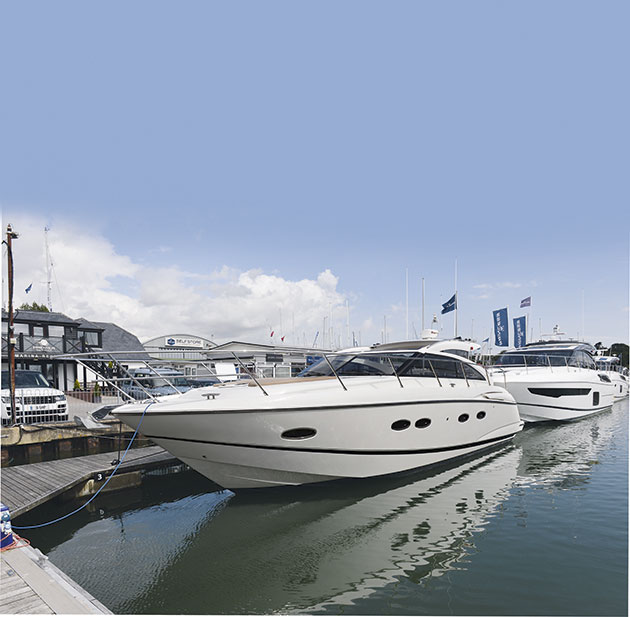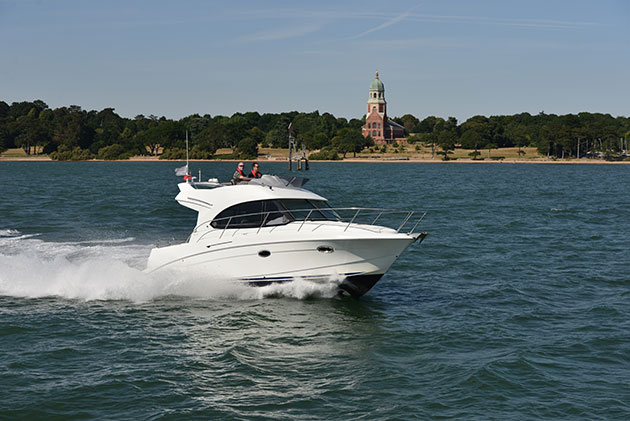Arguably the most finely resolved 40ft flybridge of its era, the Princess 40 bristled with fresh thinking when it was launched in 1997
Princess has real form in the circa-40ft twin-cabin twin-heads flybridge market. The first flybridge boat Princess ever built, the Princess 37 in 1973, was exactly this configuration albeit a different layout – the guest cabin was in the bows with crossover vee berths and the master cabin with its double berth was to port.
The Princess 38, designed by John Bennett, that replaced it in 1980 switched to a master cabin forward with a central island bed and a guest cabin to starboard with twin single beds, and that set a pattern that remained in one form or another right up to the Princess 43 of today.
Interestingly, the Princess 40 isn’t the direct descendant of that original 37 that you might imagine. The 38 morphed into the 385, which was replaced by the all-new Bernard Olesinski-designed 388. Article continues below…

VIDEO: Princess 43 tested in Plymouth sea trial
Jack Haines heads to Plymouth to test out the new, more powerful Princess 43 in a particularly choppy sea trial

VIDEO: Used Boat- Princess V42 MKIII
The Princess V42 MKIII is the last in the line of this iconic model and it makes an excellent secondhand

VIDEO: Used Boat – Princess 50 MKIII
It’s got looks to kill and the speed to match, but the Princess 50 MKIII is an elusive beast
That boat gained an integral platform, making it the 398, which was rebadged as the 410 before being replaced by the 420, and stretched via an extended bathing platform into the 430 in 1996. The Princess 40 launched in 1997 brought a smaller two-cabin two-heads boat into the fold (and in fact, the 430 was replaced three years later by the three-cabin 45).
But there’s no question that two decades of intense development in this segment, together with some clever new thinking, paid dividends, because the Princess 40 is perhaps one of the most finely resolved 40ft flybridge boats of its era.
While the layout might ape that original ’80s Princess 38, the execution is far cleverer. For example, the second cabin of the 40 extends back under
a raised helm position, doubling up use of this area of the boat. The galley is still on the lower level, but raised by one step which keeps it separate from the saloon, and puts the cook more in touch with the main deck.
The flybridge gains steps instead of a ladder and is extended almost to the transom, which gives two big advantages. The most obvious is far more flybridge real estate, allowing
a decent-sized dinette alongside the double helm while retaining enough space for a sunpad aft.
Less obvious is that fact that the cockpit canopy can now hang almost vertically from the trailing edge of the flybridge, allowing the cockpit seats to be used with the canopy in position without needing the stainless-steel framework previously required to achieve this.
It lacks the clamshell storage of the Sealine 425 but in fact, the canopy is particularly simple to use – slide the three sections into the luff groove at the top and clip them on at the base. Those three sections don’t just make it more manageable, they also allow you to open the back but leave the sides in as windbreaks. Clever.
The fresh thinking that the Princess 40 brought to the market wasn’t all above the waterline. Where previous hulls only ever stretched as far as the transom, with bathing platforms added on above the waterline, the Princess 40’s hull extended all the way back to the aft-most edge of the bathing platform.
























